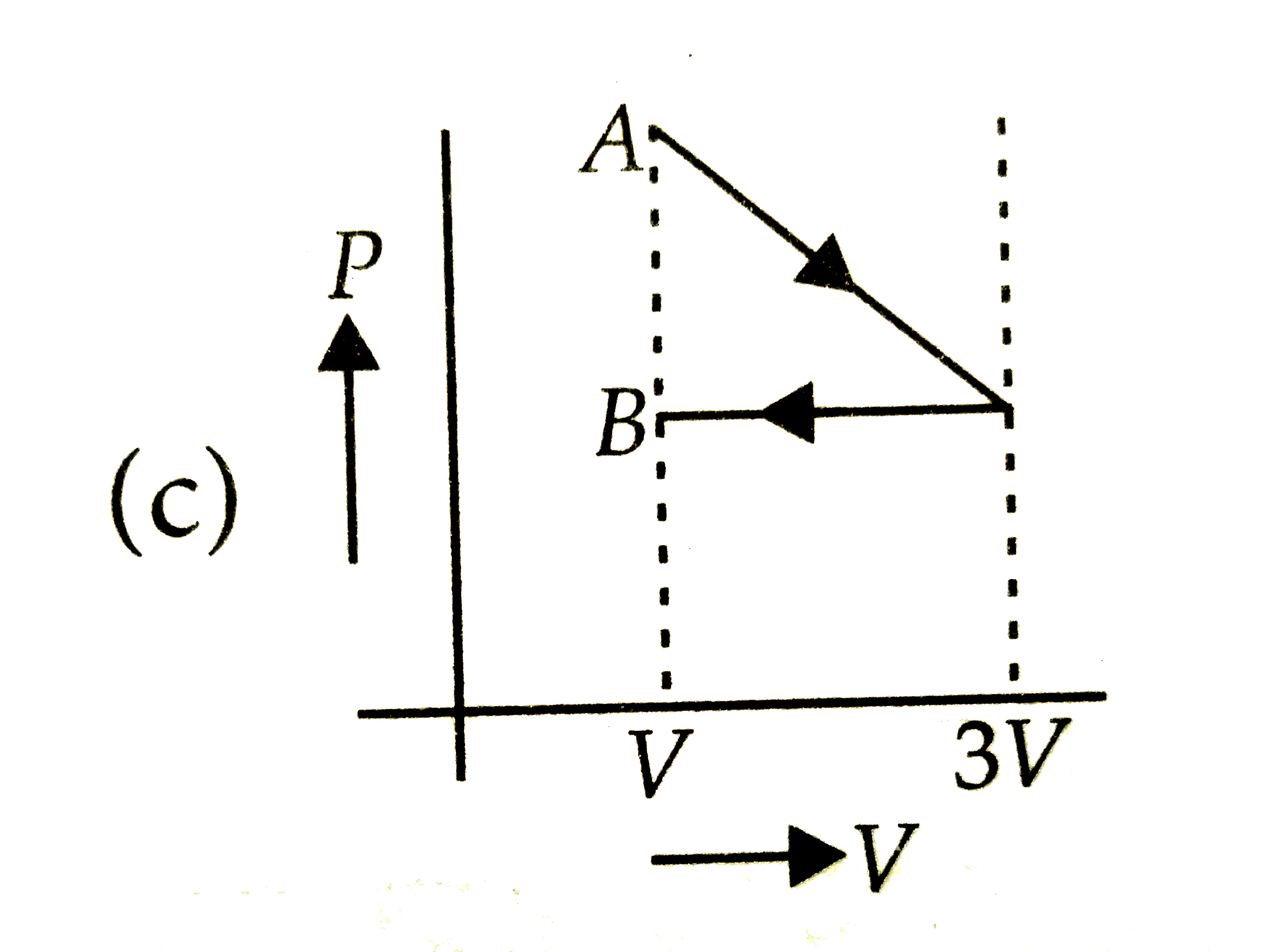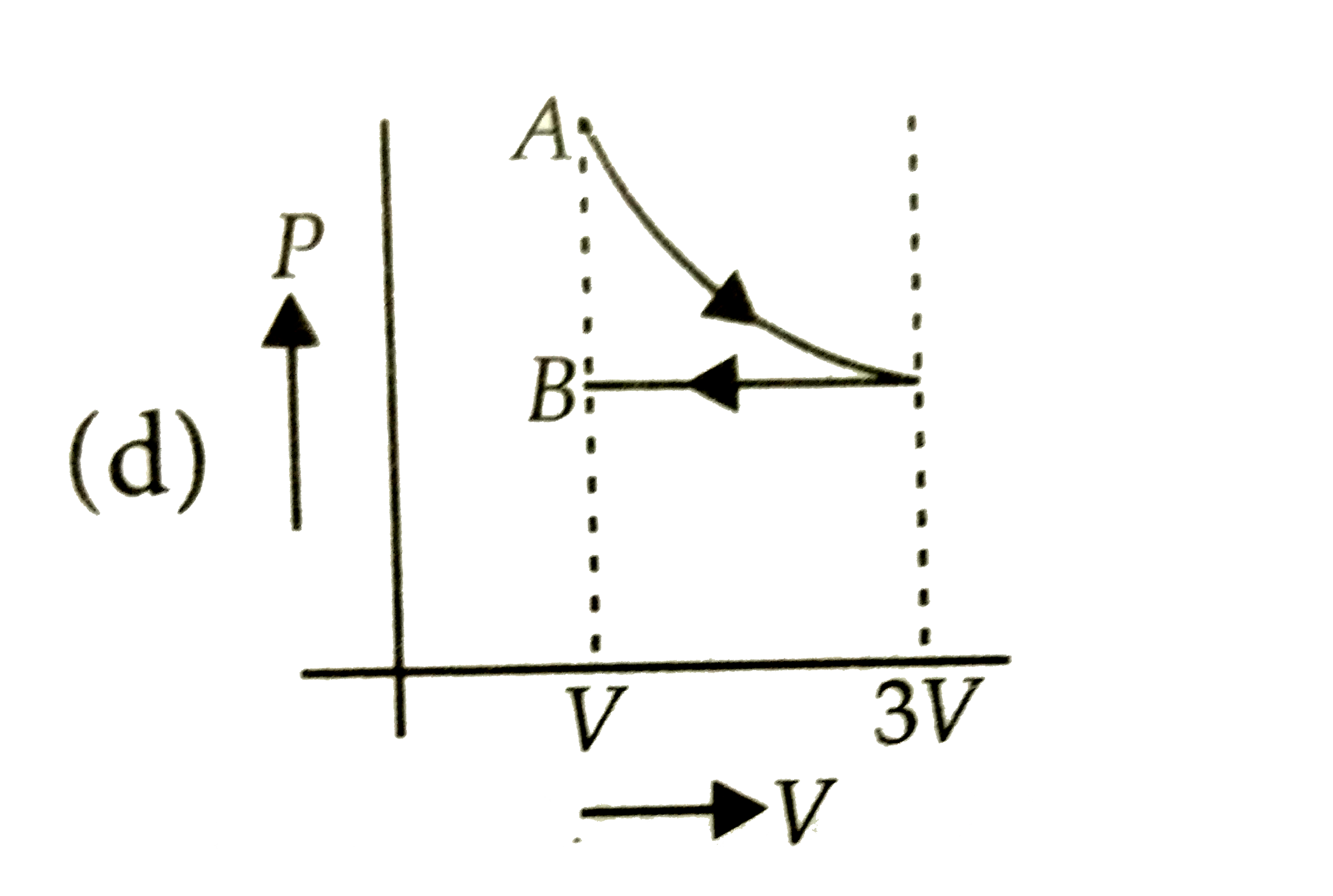A gas is enclosed in a cylinder with a movable frictionless piston. Its initial thermodynamic state at pressure p i =10 5 Pa and volume V i =10 −3 m 3 changes to a final state at P f =(1/32)x10 5 Pa and V f =8x10 −3 m 3 in an adiabatic quasi-static process, such that P 3 V 5 = constant. Consider another thermodynamic process that brings the system from the same initial state to the same final state in two steps : an isobaric expansion at P i followed by an isochoric (isovolumetric) process at volume V f . The amount of heat supplied to the system in the two-step process is approximately.
112J
294J
588J
813J
The correct Answer is:C
In adiabatic process P3V5 = constant
⇒PV5/3 = constant
⇒γ=53⇒CV=32RandCP=52R
In another process
_E01_416_S01.png)
ΔQ=nCPΔT+nCVΔT=52nR(TB−TA)+32nR(TC−TB)
ΔQ=52(PBVB−PAVA)+32(PCVC−PBVB)
Putting value
ΔQ=587.5J≈588J
Topper's Solved these Questions
- BOOK - ALLENCHAPTER - GEOMETRICAL OPTICSEXERCISE - EXERCISE - 05 (B) (MCQ)9videos
GEOMETRICAL OPTICS
- BOOK - ALLENCHAPTER - GEOMETRICAL OPTICSEXERCISE - EXERCISE - 05 (B) (MATCH THE COLUMN)3videos
GEOMETRICAL OPTICS
- BOOK - ALLENCHAPTER - GEOMETRICAL OPTICSEXERCISE - EXERCISE - 05 (A)73videos
GEOMETRICAL OPTICS
- BOOK - ALLENCHAPTER - CURRENT ELECTRICITYEXERCISE - EX.II66videos
CURRENT ELECTRICITY
- BOOK - ALLENCHAPTER - GRAVITATIONEXERCISE - EXERCISE 49videos
GRAVITATION
Similar Questions
A gas is enclosed in a cylinder with a movable frictionless piston. Its initial thermodynamic state at pressure Pi=105 Pa and volume Vi=10−3m3 changes to a final state at Pf=(1/32)×105PaandVf=8×10−3m3 in an adiabatic quasi-static process, such that P3V3=constant. Consider another thermodynamic process that brings the system form the same initial state to the same final state in two steps: an isobaric expansion at Pi followed by an isochoric (isovolumetric ) process at volume Vr. The amount of heat supplied to the system i the two-step process is approximately
View SolutionAn ideal monoatomic gas follows a thermodynamic process as shown in pressure-volume (P-V) plot. The work done in process AB is
 View Solution
View Solution
Knowledge Check
- Question 1 - Select One
One mole of an ideal gas goes from an initial state A to final state B via two processs : It first undergoes isothermal expansion from volume V to 3V and then its volume is reduced from 3V to V at constant pressure. The correct P−V diagram representing the two process in (figure)
A B
B C
C D
D
Pi,Viare initial pressure and volumes and Vf is final volume of a gas in a thermodynamic process respectively. If PVn= constant, then the amount of work done by gas is:(γ=Cp/Cv). Assume same, initial states & same final volume in all processes.
View SolutionA monoatomic gas at a pressure p, having a volume 2V and then adiabatically to a volume 16 V. The final pressure of the gas is (take γ=53 )
View SolutionAn ideal gas with pressure P, volume V and temperature T is expanded isothermally to a volume 2V and a final pressure Pi, If the same gas is expanded adiabatically to a volume 2V, the final pressure Pa. The ratio of the specific heats of the gas is 1.67. The ratio PaP1 is .......
View SolutionAn ideal gas with pressure P, volume V and temperature T is expanded isothermally to a volume 2V and a final pressure Pi, If the same gas is expanded adiabatically to a volume 2V, the final pressure Pa. The ratio of the specific heats of the gas is 1.67. The ratio PaP1 is .......
View SolutionA monatomic gas at a pressure P, having a volume V expands isothermally to a volume 2 V and then adiabatically to a volume 16 V. The final pressure of the gas is ( take γ=53)
View SolutionAn ideal gas of volume V and pressure P expands isothermally to volume 16 V and then compressed adiabatically to volume V . The final pressure of gas is [γ=1.5]
View SolutionA fixed mass of an ideal gas is compressed in such a manner that its pressure and volume can be related as P3V3 = constant. During this process, temperature of the gas is.
View Solution

